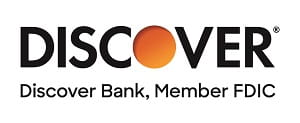Digital payments refer to transactions completed electronically rather than through traditional methods such as cash or checks. This can include a range of payment methods, including credit and debit cards, mobile wallets, online bank transfers, and cryptocurrencies. Essentially, digital payments facilitate the transfer of money through electronic means, providing a faster, more secure, and convenient method for consumers and businesses alike.
History of Digital Payments
The journey of digital payments began in the 1960s with the introduction of electronic funds transfer (EFT), which allowed banks to transfer money between accounts electronically. The emergence of credit cards in the 1970s marked a significant shift, as consumers started to embrace card-based transactions.
The 1990s saw the rise of online payment systems, with services like PayPal emerging to support e-commerce. Fast forward to the 21st century, and we witness the proliferation of mobile payment platforms like Apple Pay and Venmo, alongside the rise of cryptocurrencies, which are reshaping traditional notions of currency and payment.
Paying Digitally in Today's Economy
In today's digital-driven world, the importance of digital payments cannot be overstated. They streamline transactions, reduce the reliance on cash, and enhance consumer convenience. This shift not only benefits individuals but also businesses, allowing for quicker transactions, reduced costs associated with handling cash, and improved record-keeping.
During recent global events, such as the COVID-19 pandemic, digital payments surged as consumers sought contactless options, underscoring their crucial role in maintaining economic stability and promoting safe commerce.
Digital payments are most prominently embraced by younger age groups, particularly millennials and Generation Z. These tech-savvy individuals, typically aged between 18 and 40, are more inclined to adopt new technologies and prefer the convenience and speed offered by digital transactions.
However, with increasing education around digital tools and platforms, older generations are also becoming more acquainted with and accepting of digital payment methods, gradually bridging the gap in adoption across age demographics.
Benefits of Digital Payments
Digital payments offer a multitude of advantages that cater to both consumers and businesses, transforming the way we conduct financial transactions in today's fast-paced world.
Convenience
One of the most significant benefits of digital payments is their unmatched convenience. Consumers can make transactions using a variety of devices, including smartphones, tablets, and computers, enabling them to shop or transfer funds from virtually anywhere at any time. This flexibility enhances the overall customer experience, making it easier than ever to manage finances without the constraints of traditional banking hours.
Availability 24/7
Unlike physical banks or ATMs that operate within set hours, digital payments are accessible around the clock. This 24/7 availability means that consumers can initiate transactions whenever it suits them, whether it's late at night or during a holiday, providing a level of freedom and immediacy that is increasingly expected in today's economic environment.
Speed
Speed is a defining characteristic of digital payments, allowing for instant transactions that significantly reduce processing times. Where traditional methods may require days for funds to clear, digital payments often facilitate immediate transfers, benefiting both consumers who want swift payment confirmations and businesses that rely on timely cash flow.
Security
Security is paramount in the digital payments landscape. Advanced encryption technologies and secure networks are employed to protect personal and financial information during transactions, significantly reducing the risk of fraud. Many digital payment platforms incorporate multi-factor authentication and other safeguards, offering peace of mind for users.
Reduced Risk of Physical Theft
Transitioning to digital payments minimizes the risk associated with carrying cash, while also protecting against potential physical theft. With money stored electronically, consumers can make transactions without the fear of losing physical currency, making digital payment methods not only a more secure option but also a more practical choice for everyday transactions.
Drawbacks of Digital Payments
While digital payments offer numerous advantages, they are not without their drawbacks. Understanding these issues is crucial for consumers and businesses in our ever-evolving financial landscape.
Privacy Concerns
One of the most pressing issues associated with digital payments is the potential invasion of privacy. As consumers engage in online transactions, their personal and financial data is often collected and stored by payment processors and financial institutions. This data collection can lead to users feeling like their financial behavior is being monitored, raising concerns about how that information is used and who it is shared with.
Data Collection and Tracking
Alongside privacy concerns, the extensive data collection inherent in digital transactions can lead to tracking of consumer habits, preferences, and locations. Many digital payment platforms utilize this data for targeted advertising, which can feel intrusive to users. There is a risk that sensitive data may be sold to third parties without explicit consent, compounding user apprehension about digital privacy.
Potential for Data Breaches
Data breaches pose another threat to the security of digital payment systems. Cybercriminals constantly seek vulnerabilities in payment networks to gain access to sensitive data, which can result in severe financial losses for both consumers and businesses. Even with advanced security measures in place, no system is completely infallible, making breaches a constant concern in the digital payments arena.
Potential for Fraud
The rise of digital payment platforms also comes with an increased potential for fraud. Cybercriminals often exploit weaknesses in digital payment systems or trick consumers into revealing sensitive information through deceptive practices. Online scams and phishing attacks are prevalent, with fraudsters employing sophisticated tactics to masquerade as legitimate entities, leading unsuspecting users to divulge personal information or make unauthorized transactions.
Protecting Yourself
Given the risks associated with digital payments, it is essential for users to practice vigilant behavior. This includes regularly monitoring account statements for signs of unauthorized activity, utilizing strong, unique passwords, and being cautious about sharing personal or financial information. By adopting proactive measures and remaining informed about potential threats, consumers can mitigate the risks associated with digital payments while still reaping the benefits of this increasingly popular transaction method.
Common Forms of Digital Payments
Digital payments encompass a variety of methods, each designed to enhance the convenience and efficiency of conducting transactions. Understanding these common forms can help consumers and businesses make informed choices that best suit their needs.
Credit and Debit Cards
Credit and debit cards remain among the most widely used digital payment methods. They allow users to make immediate purchases online or in-person by simply entering card details. With the added convenience of contactless payments, many consumers appreciate the speed and ease that cards provide, alongside robust fraud protection features offered by payment networks.
Mobile Wallets
Mobile wallets, such as Apple Pay, Google Pay, and Samsung Pay, have gained tremendous popularity in recent years. These apps allow users to store card information securely on their smartphones, enabling quick and easy transactions through QR codes or NFC technology. Mobile wallets not only streamline the payment process but also integrate loyalty programs and digital receipts, enhancing the overall shopping experience.
Online Payment Platforms
Platforms like PayPal, Venmo, and Square facilitate seamless online transactions. They enable users to send and receive money quickly, whether for personal transactions or business purposes. These platforms often come with additional features, such as invoicing and transaction tracking, making them appealing for freelancers and small businesses.
Cryptocurrencies
The emergence of cryptocurrencies, like Bitcoin and Ethereum, has introduced a new dimension to digital payments. These decentralized digital currencies allow users to conduct peer-to-peer transactions without the need for intermediaries, potentially reducing transaction fees. While still relatively niche, the use of cryptocurrency is slowly growing, particularly among tech-savvy consumers and within specific industries.
Bank Transfers
Traditional bank transfers have also evolved with digital technology. Many banks now offer online services that allow for instant transfers between accounts or to third-party recipients, making it easy to settle bills or send money to friends and family. Services like Zelle and ACH transfers have made bank payments faster and more accessible.
By familiarizing themselves with these digital payment methods and understanding the pros and cons of using them, consumers can choose the options that best meet their preferences for security, convenience, and flexibility in managing their financial transactions.











